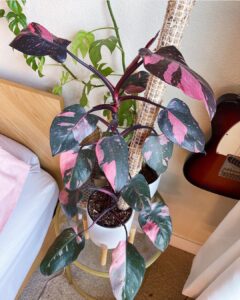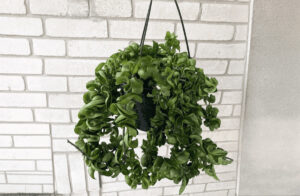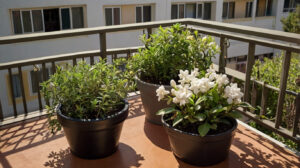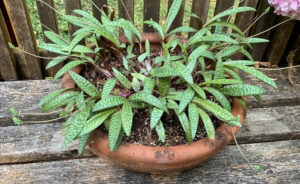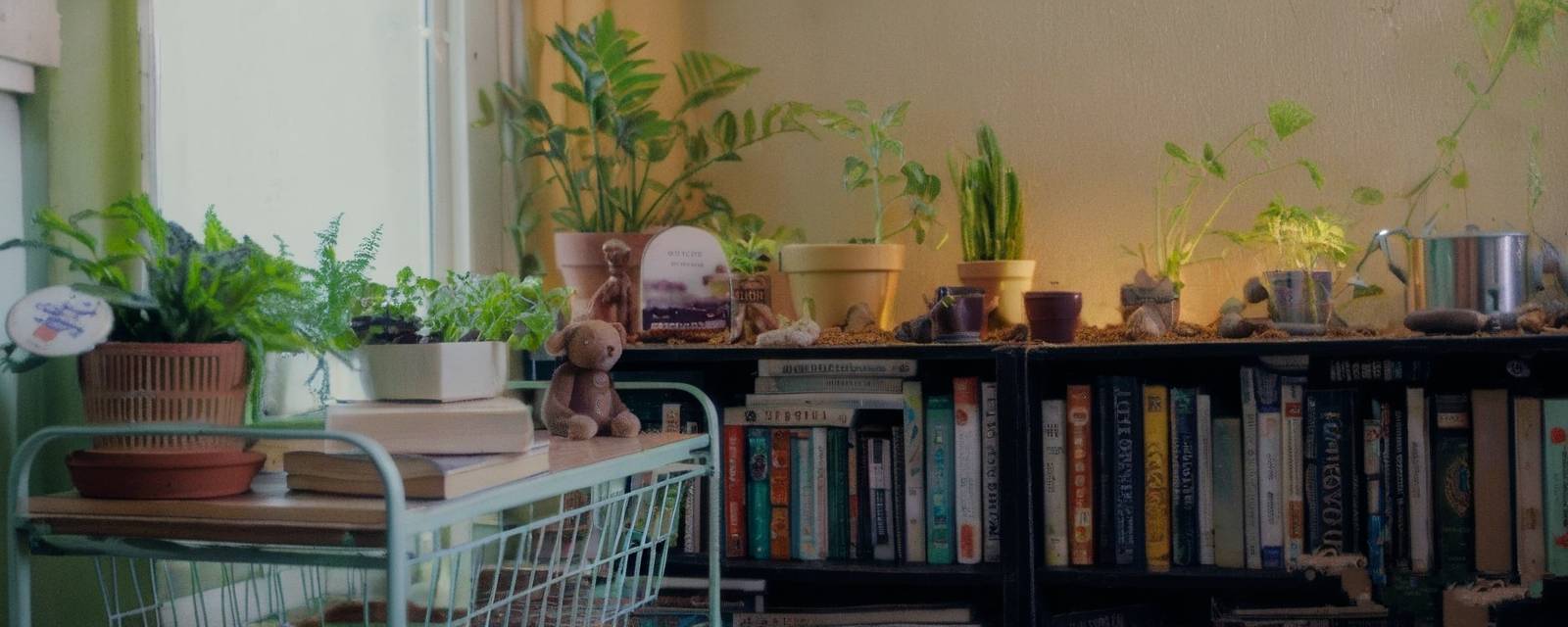
Miniature plants have captured the hearts of plant enthusiasts everywhere—and for good reason. These pint-sized botanical wonders bring all the joy of gardening to even the smallest spaces, from studio apartments to office desks.
Tiny plants are perfect for people who want to enjoy the therapeutic benefits of gardening but are limited on space. They also make ideal starter plants for beginners since they require minimal investment and maintenance.
When selecting miniature plants for indoor gardens, look for varieties that:
- Naturally stay small or grow slowly
- Adapt well to container life
- Have interesting textures or growth patterns
- Can thrive in indoor light conditions
- Create visual impact despite their small size
The nine plants featured below hit all these marks, offering maximum charm with minimal space requirements.
In this article
Baby Tears
Baby tears (Soleirolia soleirolii) creates the most delightful miniature “carpet” of tiny round leaves, giving the appearance of a magical moss-covered landscape. This plant grows only 2-4 inches tall but spreads to form a lush mat of greenery.
Care requirements: Baby tears thrives in humid environments with bright, indirect light. Keep the soil consistently moist but not waterlogged. This moisture-loving plant does well in terrariums, which naturally maintain higher humidity.
Why gardeners love it: “Baby tears adds an instant fairy-tale quality to any miniature garden,” says Wong. “Its fine texture creates the perfect backdrop for other miniature garden elements, like tiny figurines or pebble pathways.”
Best containers: Glass terrariums, small ceramic dishes with drainage, or as part of a larger fairy garden installation.
String of Pearls

With its cascading strands of perfectly round, bead-like leaves, String of pearls (Senecio rowleyanus) brings sculptural drama to tiny spaces. This succulent stays naturally compact while producing long, elegant strands that can be trained to drape beautifully over containers.
Care requirements: As a succulent, string of pearls prefers bright light and dry conditions between waterings. Allow the soil to dry out completely before watering again. Use well-draining cactus or succulent soil.
Why gardeners love it: The unique spherical leaves catch light beautifully and create interesting shadows. Despite its delicate appearance, string of pearls is surprisingly durable once established.
Best containers: Hanging planters, wall-mounted pots, or elevated containers that allow the strands to cascade downward.
Air Plants
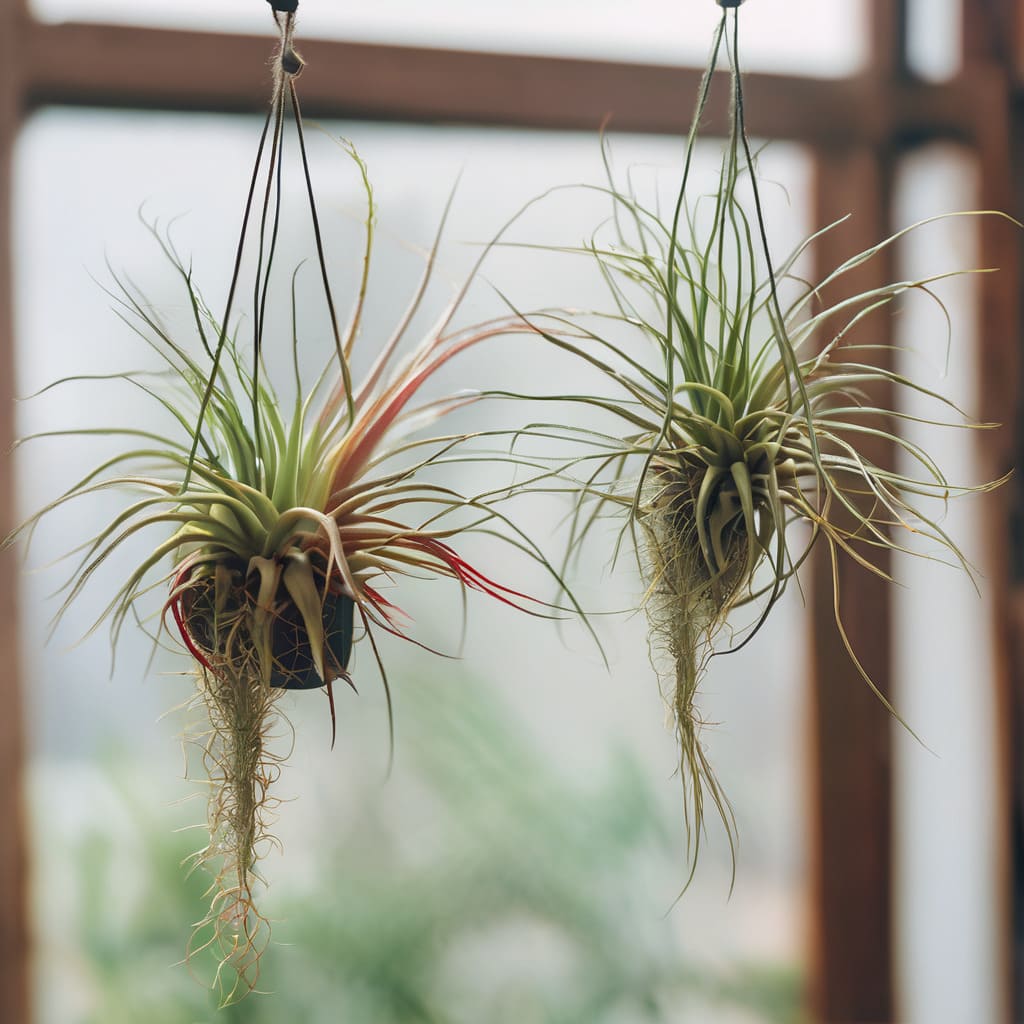
Air plants (Tillandsia spp.) are the ultimate space-savers, requiring no soil whatsoever. These fascinating epiphytes absorb moisture and nutrients through their leaves, making them perfect for creative displays where traditional potting would be impossible.
Care requirements: Bright indirect light and regular misting or soaking (typically once a week). Allow to dry completely within 4 hours after watering to prevent rot.
Why gardeners love it: “Air plants are the ultimate versatile miniature,” notes Wong. “You can place them in tiny glass vessels, mount them on driftwood, or even create living jewelry. Their sculptural forms add instant visual interest.”
Best displays: Glass terrariums, driftwood mounts, wire frames, or decorative rock arrangements.
Donkey’s Tail
Also known as burro’s tail, this charming succulent (Sedum morganianum) features plump, overlapping leaves that resemble a donkey’s tail. The stems grow slowly but can eventually cascade several inches over the edge of containers.
Care requirements: Bright light with some direct sun. Water thoroughly but infrequently, allowing soil to dry completely between waterings. Use cactus or succulent soil mix.
Why gardeners love it: Donkey’s tail offers a different texture than string of pearls while maintaining that desirable trailing habit. The bluish-green color adds depth to miniature arrangements.
Best containers: Small hanging pots, wall-mounted planters, or the edge of a miniature garden where it can spill over dramatically.
Scotch Moss
Despite its common name, Scotch moss (Sagina subulata) isn’t actually a moss but a flowering perennial that forms a bright, cushion-like mat of yellow-green foliage. Growing just 1-2 inches tall, it creates the perfect miniature lawn for tiny landscapes.
Care requirements: Bright indirect light to partial sun. Keep consistently moist but not soggy. Appreciates good air circulation to prevent mildew.
Why gardeners love it: “The chartreuse color of Scotch moss instantly brightens any miniature garden,” says Wong. “It creates the illusion of a perfectly manicured lawn that stays naturally small.”
Best containers: Shallow dishes, fairy garden installations, or as groundcover between larger elements in a dish garden.
Wooly Thyme
This aromatic ground cover (Thymus pseudolanuginosus) features tiny silver-gray leaves covered in fine hairs that give it a soft, woolly appearance. Growing just 1-3 inches tall, it spreads slowly to form an attractive mat.
Care requirements: Bright light including some direct sun. Allow soil to dry between waterings. Excellent drought tolerance once established.
Why gardeners love it: The unique texture adds tactile interest to miniature gardens. When brushed, it releases a pleasant herbal scent. Its drought tolerance makes it forgiving for busy plant parents.
Best containers: Shallow terracotta pots, rock gardens, or mixed miniature gardens where texture contrast is desired.
Venus Flytrap
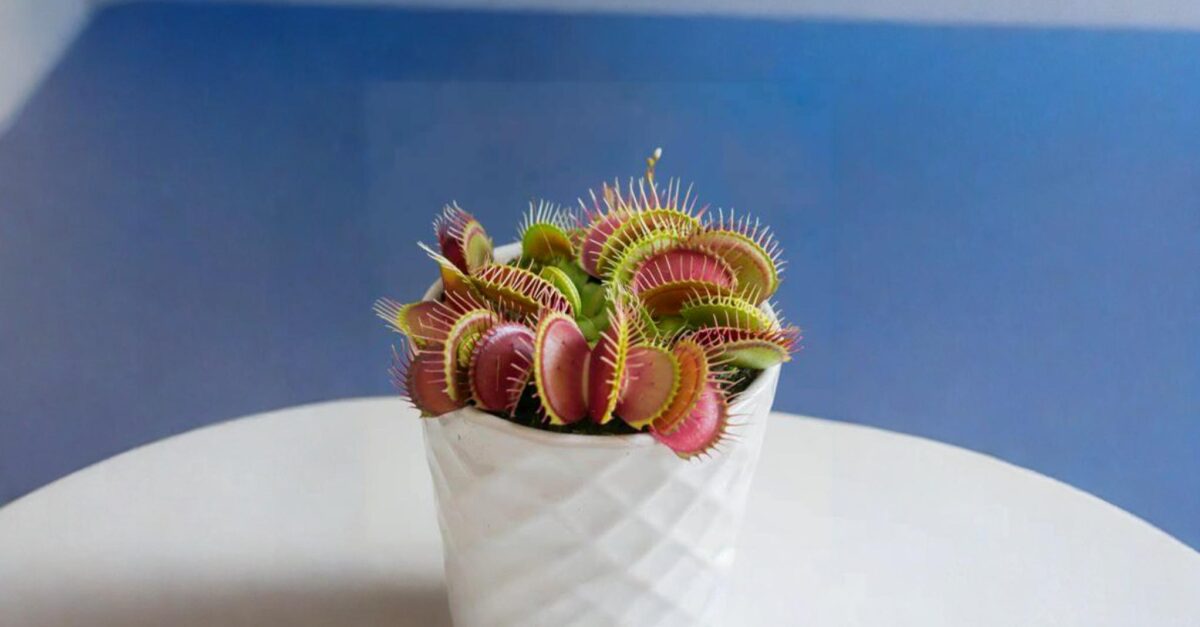
Add a touch of carnivorous intrigue to your miniature garden with a Venus flytrap (Dionaea muscipula). These fascinating plants stay naturally small, with most traps measuring less than an inch across when fully grown.
Care requirements: Bright light with some direct sun. Water only with distilled water, rainwater, or reverse osmosis water. Keep soil consistently moist but not waterlogged. Use nutrient-poor soil like sphagnum moss mixed with perlite.
Why gardeners love it: “Venus flytraps bring an interactive element to miniature gardens,” Wong explains. “Children and adults alike are fascinated by the traps and how they close around prey.”
Best containers: Small terrariums with adequate ventilation, specialized carnivorous plant pots, or as a statement piece in a larger arrangement.
African Violet
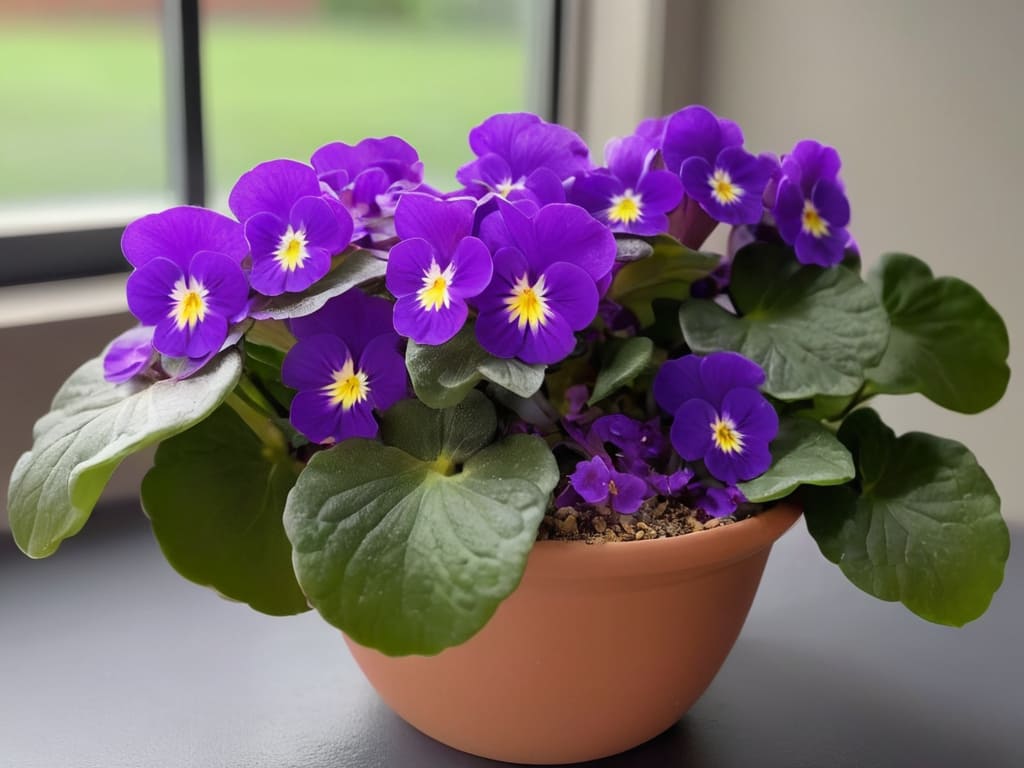
Miniature African violet cultivars (Saintpaulia ionantha) pack all the flowering power of their larger cousins into plants that rarely exceed 6 inches in diameter. These compact beauties produce velvety leaves and charming blooms in shades of purple, pink, white, and blue.
Care requirements: Bright indirect light—no direct sun. Water from the bottom when the top inch of soil feels dry. Use African violet specific soil mix for best results.
Why gardeners love it: African violets add a pop of color to miniature gardens with their near-continuous blooming habit. Their fuzzy leaves add interesting texture even when not in flower.
Best containers: Small self-watering pots designed for African violets, decorative teacups with drainage holes, or ceramic containers that complement the flower colors.
Purple Shamrock
Purple shamrock (Oxalis triangularis) offers dramatic color with its deep purple triangular leaves that fold up at night and open during the day. This plant typically grows 6-12 inches tall but can be kept smaller with regular pruning.
Care requirements: Bright indirect light, allowing direct morning sun. Allow soil to dry slightly between waterings. May go dormant periodically—reduce water during these times.
Why gardeners love it: “The daily movement of purple shamrock leaves adds kinetic interest to miniature gardens,” says Wong. “The deep purple color creates dramatic contrast against greener plants.”
Best containers: Small ceramic pots, vintage containers, or as an accent plant in mixed arrangements where its color can take center stage.
Creating Your Miniature Garden
Now that you’re familiar with these charming tiny plants, here are some tips for creating your own miniature indoor garden:
Choose compatible plants: Group plants with similar care requirements together. For example, create a desert-themed garden with string of pearls and donkey’s tail, or a woodland scene with baby tears and wooly thyme.
Scale your containers: Select containers proportional to your plants—oversized pots will make tiny plants look lost. Teacups, small ceramic bowls, and miniature terracotta pots make perfect homes for these diminutive specimens.
Add miniature accessories: Enhance the whimsical appeal with appropriately sized decorative elements like tiny benches, miniature animals, or small colored stones.
Create levels: Even in a small container, varying heights create visual interest. Use small rocks or inverted pots to create elevation differences.
Maintain perspective: When selecting containers and accessories, maintain a consistent scale throughout your miniature garden for the most realistic effect.
Why Go Miniature?
Beyond their obvious space-saving benefits, tiny plants offer unique advantages:
- Less maintenance: Smaller plants generally require less water and fertilizer than their larger counterparts
- Budget-friendly: Most miniature plants are inexpensive to purchase
- Creative expression: Tiny gardens allow for creative landscaping in minimal space
- Stress reduction: The detailed care these small gardens require can be meditative and calming
- Flexibility: Easy to rearrange or redesign as your tastes change
Whether you’re decorating a small apartment, adding green to a workspace, or simply enjoying the charm of miniature specimens, these nine tiny plants provide endless possibilities for creating magical indoor landscapes that bring joy year-round.
Which tiny plant will you add to your collection first?
YOU MIGHT ALSO LIKE: The 3 Best Terrarium Plants to Get You Started
